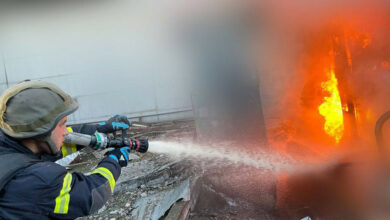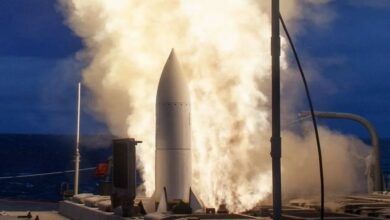China reveals Lingyun-1 hypersonic missile at National Science and Technology expo
China’s National University of Defense Technology displayed a hypersonic missile in public for the first time Saturday, as the 18th National Science and Technology Week began in Beijing.
This marks the first time state media gave an official designation to the missile, calling it the Lingyun-1.
Lingyun, which translates to ‘Reach the Clouds,’ uses a scramjet engine China was known to have developed and tested in 2015, and supposedly travels at more than five times the speed of sound.
It is the most recent hypersonic missile to be acknowledged since Russia claimed to test a hypersonic ‘Kinzhal’ missile in March. The U.S. and Australia jointly tested the HIFiRE hypersonic delivery system in 2012.
While the first report from China Daily stresses its civilian uses, the Lingyun-1 was developed by the College of Aerospace Science and Technology at the National University of Defense Technology, part of the People’s Liberation Army, which has previously published papers on hypersonic vehicle development.
Joshua Pollack, Editor of The Nonproliferation Review and a Senior Research Associate at the James Martin Center for Nonproliferation Studies, told The Defense Post, “It’s unclear to me what idea lies behind the decision to publicize it now, but it does signal the increasing sophistication of China’s military R&D complex.
Chinese researchers have published a number of papers relevant to this class of vehicle, including papers clearly indicating that developmental work was underway in specialized wind tunnels.”
Not coincidentally, the theme of this year’s National Science and Technology Week is civil-military fusion, echoing a speech laid out by President Xi Jinping at the PLA Academy of Military Sciences on May 16.
China has several high-profile hypersonic weapons under development and is building the world’s fastest wind tunnel for hypersonic aircraft testing by 2020.
This is not the first public display of China’s hypersonic capability, although it is unusual when compared to the previous reporting on China’s hypersonic glide vehicle. The DF-17 went through years of secretive testing and images of the vehicle are not easily accessible, outside of a brief spread on state media in October. The Lingyun-1, in contrast, was at an open exhibition in the Military Museum of the Chinese People’s Revolution.
The Lingyun-1 is markedly different from the DF-17, though.
“This is an air-breathing system, meaning that it’s not designed to leave the atmosphere. I don’t know what range it is supposed to have, but suspect it is not meant to cross the ocean or carry a nuclear warhead. It would probably carry a conventional payload and attack a defended target like a ship, a port, or an airfield,” Pollack explained. This is far different from the DF-17, a glide vehicle meant to reach the U.S. mainland and considered ‘dual-use,’ for both nuclear and conventional warheads.
In a hearing before the U.S. Senate Subcommittee on Emerging Threats in April, Under Secretary of Defense for Research and Engineering Michael D. Griffin claimed there was a gap between the hypersonic capability of China versus that of the U.S.
“China has fielded, or is close to fielding, hypersonic delivery systems for conventional prop strikes that can reach out thousands of kilometers from the Chinese shore and hold our carrier battle groups or our forward deployed forces on land at risk,” Griffin said, “We, today, do not have systems which can hold them at risk in a corresponding manner and we don’t have defenses against systems should they choose to employ them.”
On the same day of this hearing, however, Lockheed Martin was awarded a $928 million contract to develop a hypersonic strike weapon with conventional warhead for the U.S. Air Force.











